
User???s Guide

User???s Guide
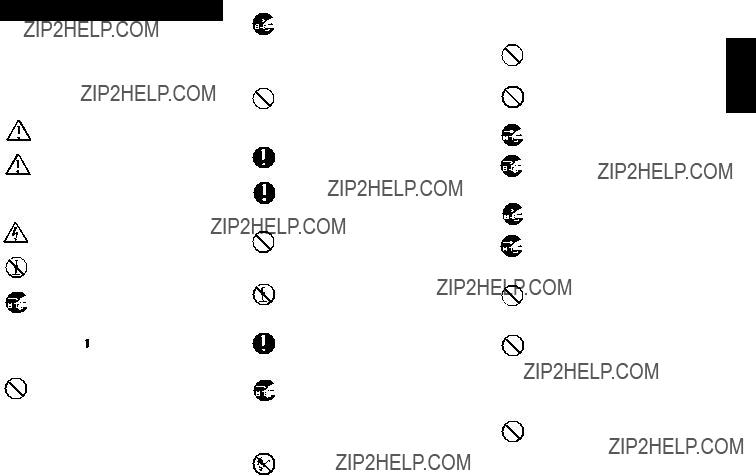
Important Safety Precautions
Note of the following safety precautions before using the label printer for the first time. Keep these safety precautions and operating instructions on hand for future reference.
About safety precaution symbols
The following symbols are used in this manual and on the product itself to alert you and others to the risk of personal and material injury.
Warning
This symbol indicates an item that can result in death or serious personal injury if ignored.
Caution
This symbol indicates an item that can result in serious personal injury or material damage if ig- nored.
Examples
A triangle indicates something you should be care- ful about. This symbol warns against electrical shock.
A circle indicates something you should not do. This symbol indicates you should not try to take something apart.
A black circle indicates something you must do. This symbol indicates you should unplug some- thing.
 Warning
Warning
Power supply and voltage
???Use only a power source whose output matches the rating marked on the plate on the bottom of the label printer. Also, avoid plugging too many appliances into the same extension cord. The wrong voltage or overloading of an AC outlet creates the danger of fire and electrical shock.
Serious malfunction
??? Continued use of the unit when smoke or a strange odor is coming from it creates the dan- ger of electrical shock. Immediately turn power off and unplug the power cord from the wall outlet. Request servicing from your original dealer.
AC adaptor
???Do not allow the power cord to become dam- aged or broken, and never modify, over bend, twist, or pull it. Never place heavy objects on the power cord, and never expose it to direct heat. A damaged power cord creates the dan- ger of fire and electrical shock.
???Use only the AC adaptor specified for this unit. Use of another AC adaptor creates the danger of fire and electrical shock.
???Should the power cord become seriously dam- aged (internal wiring is exposed or cut), request servicing from your original dealer. Use of a seriously damaged power cord creates the dan- ger of fire and electrical shock.
???Never touch the AC adaptor when your hands are wet. Doing so creates the danger of electri- cal shock.
Never try to take the unit apart
??? Never try to take the unit apart or modify it in any way. Doing so creates the danger of electrical shock, burn injury, or other personal injury.
Packaging
???Keep the plastic bag that the unit comes in out of the reach of small children. Plastic bags cre- ate the danger of suffocation for small children.
Avoid dropping
??? Should the unit ever become damaged by fall- ing down, immediately turn off power and un- plug the power cord from the wall socket. Re- quest servicing from your original dealer. Use of a damaged unit creates the danger of fire and electrical shock.
Batteries
??? Never charge batteries, try to take batteries apart, or allow batteries to become shorted. Never expose batteries to direct heat or dispose of them by incineration.
 Caution
Caution
AC Adaptor
???Do not leave the power cord near stoves or other sources of intense heat. Doing so can melt power cord insulation and create the danger of fire and electrical shock.
???When unplugging the power cord from the wall socket, grasp the plug. Never pull on the cord itself. Doing so can damage the power cord and create the danger of fire and electrical shock.
???Whenever leaving the unit unattended for long
periods, be sure to unplug it from the wall socket.
??? Whenever moving the unit, be sure to unplug it from the wall socket. Leaving the unit plugged in when it is being moved can result in damage to the power cord and create the danger of fire and electrical shock.
??? Whenever cleaning the unit, be sure to unplug it from the wall socket.
??? When you are through using the unit, use its power switch to turn it off and then unplug it from the wall socket.
Avoid unstable areas
???Never place the unit on a wobbly table or a high shelf. Doing so can cause it to fall, resulting in personal injury.
Water and other foreign matter
???Never allow coffee, juice, or other drinks, or flower vases to spill on the unit. Liquid spilled on the unit creates the danger of fire and electrical shock. Should liquid ever spill onto the unit, im- mediately turn off power and unplug the power cord from the wall socket. Request servicing from your original dealer.
Location
???Avoid leaving the unit in areas subjected to high humidity and large amounts of dust. Such con- ditions create the danger of fire and electrical shock.
English
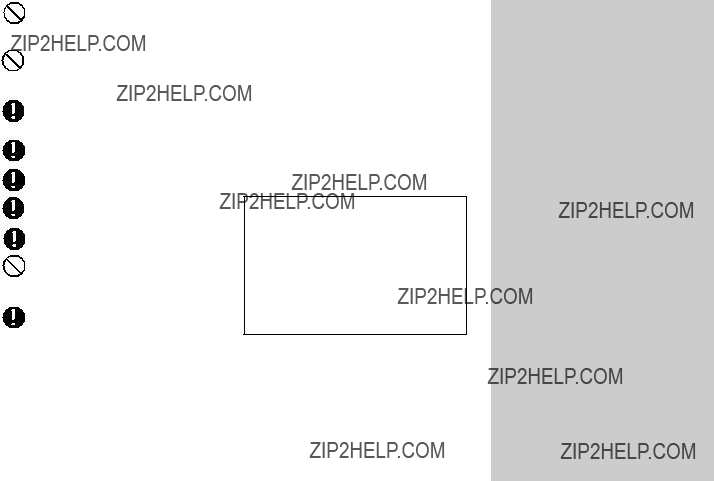
???Avoid leaving the unit on a kitchen table, next to a humidifier, or in any other area where it might come into contact with oil vapors or steam. Such conditions create the danger of fire and electri- cal shock.
???Never place heavy objects on the unit. Doing so creates the danger of the unit falling, result- ing in personal injury.
Batteries
???Misuse of batteries can cause them to leak acid that can cause damage to nearby items and creates the possibility of personal injury.
???Be sure that the plus (+) and minus
each battery are facing correctly.
??? Never mix batteries of different types.
??? Never leave dead batteries in
??? Remove the batteries if you do not plan to use
???Use only the battery type specified for this label printer in this manual.
Memory
???Always keep separate written copies of any in- formation you store in the memory of this label printer. Data stored in memory can be unexpect- edly lost due to malfunction, repair, dead bat- tery, etc.
Introduction
Congratulations on your selection of this product. This label printer makes it possible for you to print adhesive labels for a wide variety of applications, such as: name tags, cassette tape labels, floppy disks, binders, and other applications.
You can produce attractive, original labels thanks to such features as:
???Variable tape sizes (6mm, 9mm, 12mm, 18mm, 24mm)
???10 fonts
???5 character styles (normal, bold, outline, shadow, raised)
???Various font effects
???Bar code printing
???Auto numbering
???Text memory
???Preset formats and preset layouts
You can even store data in memory for instant recall when you need it.
Important!
???Contact a nearby dealer whenever you require serv- icing.
???Note that the manufacturer shall not be held liable for any loss or claims by third parties which may arise out of the use of this product.
???Note that the manufacturer shall not be held liable for any damages incurred as a result of data loss caused by malfunctions, repairs, or interruption of power supply.
???It is up to the user to keep backup records of impor- tant data.
???Keep this manual on hand for future reference.
Quick Reference
Though your label printer is packed with powerful fea- tures and functions, it is also designed to be easy to setup and use. The following procedures tell you how to set up the label printer and start printing labels right away using preset (auto) layouts. As you become more experienced, you can use the more sophisticated settings and opera- tions described in detail in the other sections of this manual to add even more creativity and originality to your labels.
Getting Ready
1.Connect the AC adaptor to the label printer (page
2.Load a tape cartridge (page
3.Turn on power (page
4.Reset the memory if necessary (page
5.Use the SET UP menu (page
Creating a Label Using an Preset (Auto)
Layout (page
Example: To create a VHS video cassette label for the title ???Label Printer??? to appear as follows.
1.Turn on the label printer, and clear all text from its screen.
2.Press PRESETS to display the PRESETS menu.
3.Use uand ito move the highlighting to ???LAYOUT??? and then press SET.
4.Use u and i to move the highlighting to ???NEW??? and then press SET.
5.Use u and i to move the highlighting to ???VIDEO??? and then press SET.
6.Use u and i to move the highlighting to ???VHS??? and then press SET.
7.Use t and y to move the highlighting to <number> and then press SET.
8.Input the text you want to include in each block, and then press SET to advance to the next block.
9.Specify the print direction (page
10.After making the settings you want, press SET.
11.Use u and i to move the highlighting to ???PRINT??? and then press SET to execute it.
12.After printing, you can store your newly created label in memory.
Contents

Part 1 Getting Acquainted
This part of the manual provides you with important infor- mation you need to know in order to use the label printer to its full potential. Be sure to read it carefully before using the label printer for the first time.
Important Precautions
???Keep your label printer out of areas subject to tempera-
ture extremes, moisture and direct sunlight. The recom- mended temperature range is 10?? to 35??C (50?? to 95??F).
???Don???t let coffee, juice or other liquids splash onto the label printer.
???Never let paper clips, pins or other foreign objects get into the tape outlet slot or printer of the label printer.
???Do not pile heavy objects on top of the label printer.
???Never try to take the label printer apart or attempt your own maintenance.
???Do not drop your label printer and avoid strong impact.
???Do not pull on the tape or try to force it back into the label printer.
???Never operate the tape cutter lever when a tape cartridge is not loaded in the label printer. Doing so can damage the cutter blade.
???Never touch the printer head with your fingers.
???Take care to avoid applying too much pressure to the tape cutter lever. Doing so can damage it.
???Do not use benzine, thinner, or other volatile chemicals to clean the exterior of the label printer. Use a soft, dry cloth or a cloth dampened in a weak solution of a mild, neutral detergent and water. Wring the cloth out until all excess moisture is removed.
???A dirty printer head can cause printing to become smudged. When this happens, clean off the printer head by wiping it with a cotton swab moistened with alcohol (page
???Use of the label printer next to a television or radio may interfere with reception.

General Guide
Label Printer Menus
Label printer operation is designed to be as simple as pos- sible, thanks to
???The item that is highlighted in a menu is the one that is currently selected.
???Use u and ito move the highlighting up and down and change the selected item.
???Press SET to execute the highlighted item, or ESC to exit the displayed menu (and return to the previous menu or screen) without selecting anything.
???When you press SET to execute a menu item, the label printer either moves on to the next menu, or it executes the selected function and returns to the text input screen that you started from.
AC adaptor
connector
Replacing the Cover if it Comes Off
If the cover comes off, replace it as shown in the illustra- tion nearby. Take care to avoid damaging the tabs and hinges when installing the cover.
Part 2 Getting Ready
This part of the manual tells you how to load and replace batteries, load the tape cartridge, and perform other basic setups for the label printer.
Important! Be sure to read this section before attempting to use the label printer.
Power Supply
The Label Printer can be powered by a specified AC adap- tor
AC Adaptor
Note the following important precautions when using an AC adaptor to power your label printer.
???Use only specified CASIO
???Be sure to turn the label printer off before you connect the adaptor. Do not turn power on until the adaptor is con- nected to the label printer and plugged into an AC outlet.

To connect the AC adaptor
Remove the AC adaptor connector cover, and connect the adaptor to the label printer as illustrated below. Plug the other end into a standard household AC outlet.
After you finish using the label printer, turn it off and discon- nect the AC adaptor.
???Be sure to grasp the plug of the AC adaptor cord when disconnecting it. Never pull on the cord.
Loading/Replacing Batteries
A handy low battery power indicator lets you know when battery power is getting too low for proper operation. The message LOW BATTERY or REPLACE BATTERIES ap- pears on the display if battery power is low when you per- form any of the following operations.
???Switching power on
???Executing a print operation
???Executing a tape feed operation
You should still be able to perform some Label Printer op- erations, but some power intensive operations (like printing or tape feed) may become impossible if battery power is too low. In any case, you should replace batteries as soon as possible or switch to the AC adaptor as soon as possible after the LOW BATTERY message appears.
Important!
Batteries can burst or leak and damage your unit if you use them the wrong way. Note the following important points.
???Be sure that the plus (+) and minus
???Never mix batteries of different types
???Never leave dead batteries in the battery compartment.
???Remove the batteries if you do not plan to use the unit for a long time.
???Replace the main battery in accordance with the battery life marked on the side of the battery.
???Have the
Warning!
???Never recharge the batteries you use with this unit.
???Do not expose batteries to direct heat, do not short circuit them, and do not try to take them apart.
???Keep batteries out of the reach of small children. If swallowed, consult with a physician immediately.
???Low battery power is indicated by poor print quality or power switching off while printing is in progress.
Loading/Replacing the main batteries
1. Switch power off.
???If you are using the AC adaptor to power the unit, you should also unplug the adaptor from the Label Printer.
2.Open the battery compartment cover on the back of the Label Printer by sliding it in the direction indicated by the arrow.
3.If you are replacing batteries, remove all eight of the old batteries.
4.Load a set of eight new batteries into the battery com- partment, making sure that their positive (+) and nega- tive
5.Replace the battery compartment cover.
Turning Power On and Off
Press ON to turn power on, and OFF to turn power off.
Important! If you are using the label printer for the first time, you should reset it first.
Power On Recall Function
Whenever you turn power off, any input that is on the dis- play is automatically stored in memory. Then the next time you turn on power, the message ???[SET] TO RECALL??? ap- pears on the display. Pressing SET when this message is on the display recalls the text that was on the screen when you last turned off power.
???Pressing any key besides SET, FUNC, SHIFT or CODE clears the text from memory.
Resetting the Memory
You should reset the memory of the label printer before us- ing it for the first time, after you have not used it for a long time, or if nothing happens when you turn power on.
Important! Resetting label printer memory clears its memory of all input data.
To reset the memory
1.Make sure that label printer power is off.
2.While holding down the PRINT and ESC keys, press ON to turn power on.
I N I T I A L ?
SET / ESC
3.Press SET to initialize the label printer or ESC to abort the reset operation without initializing anything.
???See ???Initial Settings??? on page
???You have to reset the Label Printer if you want to change the
Auto Power Off Function
If you do not perform any key operation for about six min- utes, the label printer automatically turns power off. To re- store power, press ON.
Tape Cartridges
Use the procedures described below to load a tape car- tridge into the label printer. The label printer automatically detects what size tape is loaded.
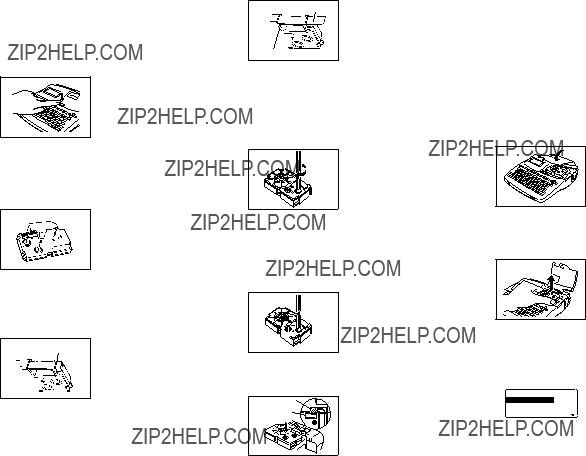
Important! Never try to push the tape back into the cas- sette. Once tape is out of the cassette, there is no way to wind it back in. Trying to do so can cause operational prob- lems with the label printer.
To load a tape cartridge
1.Make sure the label printer is turned off.
2.Press the cover release and open the cover.
???If there is a cartridge already in the label printer, remove it by grasping the cartridge on both sides with your thumb and forefinger, and lift straight up.
3.Remove the stopper from a new tape cartridge and check to see that the tape is ready to use.
4.Check to make sure that the end of the tape is not bent.
??? If the end of the tape is bent, use scissors to cut off the bent portion.
5.Make sure that the tape is under the tape guide and that it is not bent or twisted.
Tape guide
???Make sure the end of the tape is passing through the tape guide. If it isn???t, pass the end of the tape through the tape guide as shown in the illustration.
6. Pull out about 3cm (11/8") of tape.
Tape
Ink ribbon
???Never try to force tape back into the cartridge once it is pulled out.
???Do not pull on the tape too hard. Doing so can break the ink ribbon and result in malfunction.
7.Use a pencil or some other thin object to take up slack in the ink ribbon as shown in the illustration. Note that the tape does not move at this time.
???If the ink ribbon is slack when you load it into the label printer, it can break or cause some other problem.
???Be sure to turn the ink ribbon take up spool only in the direction indicated by the arrow (a).
???Turn the spool until the other spool (b) starts turning in the direction noted by the arrow. This indicates there is no slack in the ribbon.
 (a)
(a)
(b)
8.Load the tape cartridge into the label printer, making sure that the tape and ink ribbon pass between the head and roller.
Roller
Printer head
???Be sure to lower the tape cartridge straight down into the label printer, and press down on it until it clicks securely into place.
9.Close the cover and operate the tape cut lever to cut off the tape.
10.Turn on label printer power and press FUNC and then
PRINT (FEED) two or three times to make sure that the tape comes out without any problem.
???If the tape does not come out normally, turn off power and start again from step 1 above.
Removing the Tape Cartridge
???Grasp the tape cartridge with your fingers as shown in the illustration, and lift it straight up out of the label printer.
???To make it easier to remove a narrow (6mm, 9mm) tape cartridge, insert a pencil or some other thin, pointed ob- ject under the right side of the tape and lift up, as shown in the illustration.
About the SET UP menu
The SET UP menu lets you change various basic settings quickly and easily. To display the SET UP menu, press FUNC and then FORM.
??? ??? ??? ??? SET UP ??? ??? ??? ???
I NPUT
CONTRAST
Use u and i to move the highlighting to the item you want to select and then press SET. Press ESC to clear the SET UP menu without selecting anything. The following sections explain how to use most of the SET UP menu items. See page

Message Language
You can use the following procedure to select any one of five different languages (English, German, French, Italian, Spanish) for display of message text.
???All of the display examples in this manual use English as the display language.
To change the message language
1.On the SET UP menu, use uand i to highlight ???LAN- GUAGE??? and then press SET.
??? ??? ??? L ANGUAGE ??? ??? ???
DEUTSCH
FRAN??A I S
2.Use u and i to highlight the language you want to use and then press SET.
Display Contrast
Use the following procedure to make the characters on the display darker or lighter.
To change the display contrast
1.On the SET UP menu, highlight ???CONTRAST??? and then press SET.
2.Use t and y to make the display contrast lighter and darker.
3.After setting the contrast, press SET.
Sound
The label printer is equipped with sound capabilities that signal when power is turned on and when an illegal opera- tion is attempted. Normally, sound are turned on whenever you turn power on, but you can use the following procedure to turn the sound on and off.
To turn sound on and off
1.On the SET UP menu, highlight ???SOUND??? and then press
SET.
2.Use u and i to highlight the setting you want (ON or OFF) and then press SET.
Unit of Measurement
This label printer can use either centimeters (cm) or inches (inch) as the unit of measurement.
To set the unit of measurement
1.On the SET UP menu, highlight ???cm/inch??? and then press
SET.
2.Use u and i to highlight the setting you want (cm or inch) and then press SET.
Demo Print
After setting up the label printer, you may want to produce a demo print to make sure that everything is working properly.
To produce a demo print
1.Press ON to turn power on.
2.Press PRINT and then SET.
The following are examples of the demo print that the above procedure produces. Note that the contents of the demo print depends on the width of the tape loaded in the label printer.
6mm Tape
9mm Tape
12mm Tape
18mm and 24mm Tape
Important!
???You can produce a demo print when the text input display is clear, immediately after turning power on only. Even if you input text and then delete it, pressing PRINT will not produce a demo print.
???If you experience problems with printing, check your tape cartridge and power supply, and try again.
Part 3 Inputting Characters and
Symbols
This part of the manual tells you how to input characters. To make things easier to understand, we call everything you input a character, regardless of whether it is actually a let- ter, number, or symbol. Explanations here all use the de- fault settings that are in effect from the initial
For information on using other fonts, styles, effects and char- acters sizes, see pages
Important! You can input up to 255 characters per label. Further input becomes impossible after you input the 255th character.
Display Symbols and Indicators
Before getting into actual input, you should first become acquainted with the symbols and indicators used on the la- bel printer display.
CAPS on/off indicator
???A??? indicates
Font indicator
This indicator shows the font setting (page
Function indicator
This indicator appears when you press the FUNC key. Press- ing a key while this indicator is on the display causes the function marked above that key to be executed.

Shift indicator
This indicator appears when you press the SHIFT key. While this indicator is on the display, the keyboard is shifted, so the letter keys input the opposite of their current
Code indicator
This indicator appears when you press the CODE key. While this indicator is on the display, number keys input the accents marked above them and the U, O, P, A, S, J, K, L, Z, C and N keys input the special characters marked in their lower right corners. The keyboard automatically returns to normal (and the code indicator disappears) as soon as you input an accent.
Character size display indicator
This indicator shows the size of the character where the cursor is currently located. The letter ???F??? to the right of the character size indicates a preset format is being used.
The letter ???S??? indicates that the label printer???s small typeface is selected.
Block number
This value appears when there are multiple blocks in the text. It shows the sequential number of the block where the cursor is currently located (page
Format
This indicator shows how many lines of text have been in- put. See page
Tape length
This value shows the length that the tape will be printed. See page
Character position marks
These marks show where characters will appear as you input them.
Cursor
The cursor shows the next input position. Any character you input appears at the point where the cursor is located.
Block mark
This mark separates two blocks on the screen.
Return symbol ( )
)
The return symbol indicates a newline operation.
Character style indicators
These indicators point to the character effect that is assigned to the character where the cursor is currently located. You can select between normal, bold, outline, shadow, and raised.
Mirror image printing indicator
This indicator appears when the label printer is set up for mirror image printing. Normal
Manual feed indicator
This indicator appears when you are using manual feed in- stead of auto feed. Auto feed is in effect when this indicator is not on the display.
Important! After you finish printing when using manual feed, be sure to always press FUNC and then PRINT (FEED) to feed the tape before cutting it. If you don???t you will cut off part of the printed text.
Basic
The following operation shows you the basic procedures for inputting letters and numbers. We will explain the proce- dure by inputting the following characters using the default initial
ABXYZ Computer Company 1234567890
Note If you hold down any key, it will repeat its operation or input at high speed until you release it.
To input
1.Turn power on.
2.Input the first line of characters.
???To input the
???Press SPACE to input spaces.
???If you input a wrong character, press BS to delete it and input again. See page
3.When you reach the end of a line of text, press B to input a newline mark.
???A newline operation is indicated on the display by the  symbol. This shows where you changed lines.
symbol. This shows where you changed lines.
4. Input the characters in the second line.
5.To print the text that you input, press PRINT. For details on printing, see page
About the CODE key...
The CODE key makes it possible to input punctuation needed for a number of different languages. The following shows the key operations you should use for each of the characters formed using the CODE key.
??? CAPS on
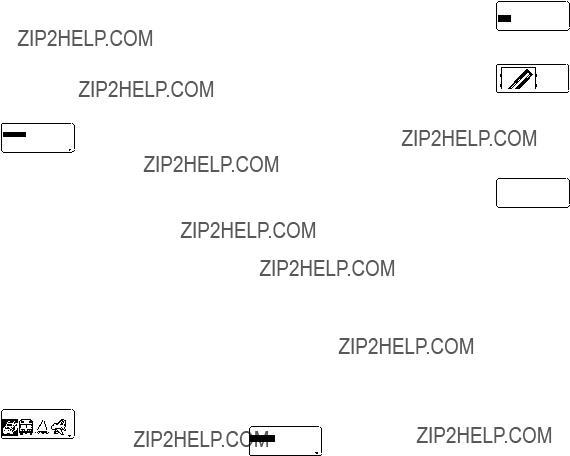
Inputting Symbols, Dingbats, Special
Numbers, Greek Characters, and
Russian Characters
The SYMBOL menu provides you with a choice of symbols, dingbats, and special number formats, in addition to Greek and Russian letters.
To use the SYMBOL menu
1.With the cursor at the location where you want to input a symbol, dingbat, number, or character, press the SYMBOL key to display the SYMBOL menu.
??? ??? ??? ??? SYMBO L ??? ??? ??? ???
D I NGBAT
NUMBER
2.Use u and i to move the highlighting to the item you want to select and then press SET.
???Pressing SET causes a menu of symbols, dingbats, number formats, or characters to appear.
???To clear the SYMBOL menu without selecting anything, press ESC.
3.Use u, i, t and y to move the highlighting to the character you want to select, and then press SET.
???Pressing SET returns to the input screen, with the sym- bol, dingbat, or character you selected input at the loca- tion where the cursor was located when you displayed the SYMBOL menu.
See page
Inputting Illustrations
Your label printer gives you a choice of 50 illustrations that you can use in your labels.
To input illustrations
1.With the cursor at the location where you want to input an illustration, press the ILLUST key to display the ILLUST menu.
??? ??? ??? ??? I L LUS T ??? ??? 1
2.Use u, i, t and y to move the highlighting to the illustration you want to select, and then press SET.
???Pressing SET returns to the input screen with the illustra- tion you selected input at the location where the cursor was located when you displayed the ILLUST menu.
See page
User Characters
You can create up to four user characters and store them in memory. You can create a character from scratch, or you can use an existing character or symbol as a basis for cre- ating a new character.
User character drawing techniques
The following describes the basic techniques for drawing on the user character screen.
??? To move the cursor
Use u, i, tand yto move the cursor around the screen. FUNC tand FUNC y makes the cursor jump to the far left or far right of the screen (when ???CON??? is not highlighted).
FUNC u and FUNC i makes the cursor jump to the top or bottom of the screen (when ???CON??? is not highlighted).
??? To draw a dot
Press 1 to draw a black dot at the cursor position or 2 to draw a white dot.
??? To draw a series of black dots
Press 1 to highlight ???BLK???, and then press 3 to highlight ???CON???. In this condition, a continuous series of black dots will be drawn when you move the cursor.
??? To draw a series of white dots
Press 2 to highlight ???WHT???, and then press 3 to highlight ???CON???. In this condition, a continuous series of white dots will be drawn when you move the cursor.
To create a user character using an existing character
1.Input the character or symbol you want to use as a basis for your new character and locate the cursor under the character.
2.Press FUNC and then ILLUST (USER CHR).
MAKE
ED I T
3.Use u and i to move the highlighting to ???MAKE??? and then press SET.
USE I NPUT CHAR
4.Use u and i to move the highlighting to ???USE INPUT CHAR??? and then press SET.
1 : B L K
2 : WHT
3 : CON
???The screen contains an image of the character you input in step 1.
???If you selected ???NEW???, a screen appears for creating a character from scratch.
5.Use the user character drawing techniques to change the image on the screen.
6.After you are finished changing the character, press SET.
7. Use t and y to select the user character area where you want to store the character and then press SET.
???If the user character area you select already has a char- acter in it, the old character will be replaced with the new one.
8. Press SET to store the character.
???If there was no input character at the cursor location when you pressed FUNC and then ILLUST (USER CHR) in step 2, the screen for creating a new character from scratch appears when you press SET in step 3.
To create a user character from the user character you created
1.Press FUNC and then ILLUST (USER CHR).
2.Use u and i to move the highlighting to ???EDIT??? and then press SET.
3.Use t and y to select the user character you want to edit, and then press SET.
4.Use the user character drawing techniques described to edit the character you want, and then press SET.
5.Continue from step 7 under ???To create a user character using an existing character???.
To recall a user character
1.With the cursor located in the input screen where you want to input the user character, press FUNC and then
ILLUST (USER CHR).
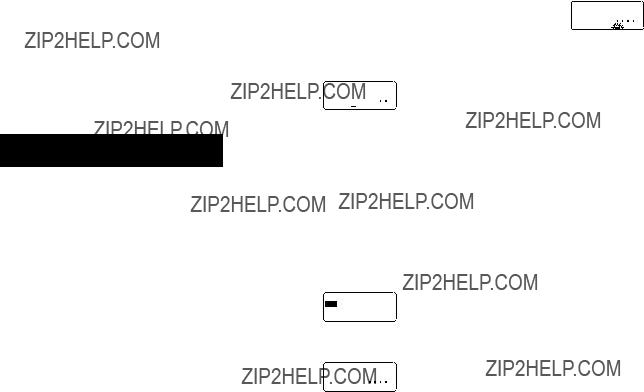
2.Use u and i to move the highlighting to ???RECALL??? and then press SET.
3.Use t and y to select the user character you want and then press SET.
To delete a user character
1.Press FUNC and then ILLUST (USER CHR).
2.Use u and i to move the highlighting to ???DELETE??? and then press SET.
3.Use t and y to select the user character you want and then press SET.
4.Press SET to delete the selected character or ESC to abort without deleting anything.
Part 4 Deleting and Inserting
Characters
This section describes everything you need to know about deleting and editing characters you have already input.
Moving the Cursor
Use the cursor keys to move the cursor around the display and position it for deleting and editing characters.
To move the cursor
???Press t to move the cursor to the left, and y to move the cursor to the right.
???Press SHIFT and then t to make the cursor jump to the next block mark ( ) to the left. (See page
) to the left. (See page
???Press SHIFT and then y to make the cursor jump to the next block mark ( ) to the right.
) to the right.
???Press FUNC and then t to make the cursor jump to the beginning (far left) of the current line.
???Press FUNC and then y to make the cursor jump to the end (far right) of the current line.
???Press FUNC and then u to make the cursor jump to the first character of the text.
???Press FUNC and then i to make the cursor jump to the end of the text.
???Holding down the t or y cursor key moves the cursor at high speed.
Deleting Individual Characters
You can delete individual characters with either the BS key or the DEL key. The only difference between the operation of these two keys is the location of the cursor.
To delete characters using the BS key
Example: To change the word ???commmputer??? to ???computer???.
1. Use t and y to move the cursor under ???p???.
c o m m m p u t e r
2.Press BS twice to delete the two m???s to the left of the cursor, shifting ???puter??? to the left as you do.
To delete characters using the DEL key
Example: To change the word ???commmputer??? to ???computer???.
1.Use t and y to move the cursor under the first (far left)
???m???.
2.Press DEL twice to delete the two m???s at the cursor???s position, shifting ???mputer??? to the left as you do.
Clearing the Display
The label printer gives you a choice of clearing the entire display or only a specific block of text.
To clear all text
1. Press FUNC and then BS (CLS).
??? ??? ??? ??? ??? C L S ??? ??? ??? ??? ??? ???
PART
2.Use u and i to highlight ???ALL??? (if it isn???t already high- lighted).
3.Press SET.
??? ??? ??? ??? ??? C L S ??? ??? ??? ??? ??? ???
C L EAR ? SET / ESC
c o m p u t e r
4.Press SET to clear all of the text on the display or ESC to abort without clearing anything.
To clear a portion of text
1.Press FUNC and then BS (CLS).
2.Use uand ito highlight ???PART??? (if it isn???t already high- lighted).
3. Press SET.
??? ??? ??? ??? ??? C L S ??? ??? ??? ??? ??? ???
FROM ?
c o m p u t e r
4.Use t and y to move the cursor to start point of the text you want to delete and press SET.
5.Use t and y to move the cursor to end point of the text
you want to delete.
???The text between the cursor and the start point is high- lighted as you move the cursor.
6.Press SET to clear the highlighted text or ESC to abort without clearing anything.
Text Editing
You can set up the label printer so it either overwrites exist- ing characters with new input, or inserts new input between existing characters. Note the following example.
Example
Existing text: ABCDEFGHI
Cursor location: E
New input: XXX
Overwrite
Result: ABCDXXXHI
Insert
Result: ABCDXXXEFGHI
To switch between overwrite and insert
1.Press FUNC and then FORM (SET UP) to display the SET UP menu.
2.Use uand ito highlight ???INPUT??? and then press SET.
3.Use u and i to highlight the setting you want (???IN- SERT??? or ???OVERWRITE???) and then press SET.
???The CAPS indicator on the display is highlighted when overwrite is turned on. The CAPS indicator appears nor- mally (unhighlighted) when insert is turned on.
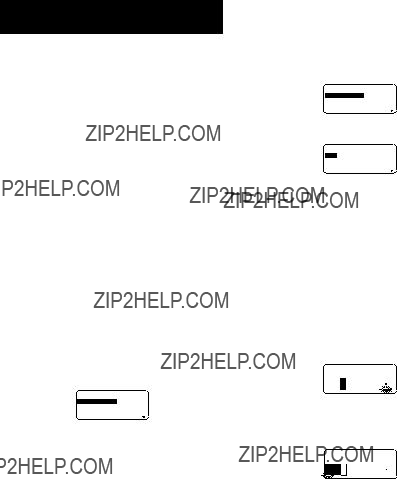
Part 5 Character Attributes and
Text Effects
The operations in this part of the manual explain how to change fonts and character styles. These characteristics are called ???character attributes???. It also tells you how to assign such text effects as underlining, shading, and box printing to text.
Important!
???Character attributes you specify affect printed text only. The characters on the display do not change.
???Remember that character attributes are assigned to spe- cific characters. Whenever you replace a character with another one, the new character also picks up the attributes of the original character.
???Text effects are applied to both displayed text and printed text.
Fonts
This label printer gives you a choice of 10 different fonts. See page
The following sections describe how to change the default font setting (the font that is automatically used whenever you input text), how to change the font for displayed text, and how you can find out what the font setting is for text on the display.
Important!
???Note that you cannot make font changes for illustrations.
???Note that
To change the default font setting
1.Press FUNC and then FORM (SET UP) to display the SET UP menu.
2.Highlight ???DEFAULT FONT??? and then press SET.
??? DEFAU L T FONT ???
SANS - SER I F I TA L
ROMAN
3. Use u and i to highlight the font you want to set as the default and then press SET.
???Be sure to perform the following procedures after chang- ing the default font setting. Note that changes in the de- fault font will not be recognized until the following proce- dure is performed.
4.Press FUNC and then BS.
5.Select ALL to clear all text from the display.
6.Turn off power, and then restart the Label Printer.
???Note that the default setting remains in effect until you change it, even when power is turned off.
To change the font for displayed text
1. While there is text on the display, press FONT.
??? ??? ??? ??? ??? FONT ??? ??? ??? ??? ???
SANS - SER I F I TA L
ROMAN
2.Use u and i to highlight the font you want to change to and then press SET.
??? ??? ??? ??? ??? FONT ??? ??? ??? ??? ???
B LOCK
LI NE
???What you should do next depends on the range you want to use.
To change the font for all the text
1.After performing the two steps under ???To change the font for displayed text???, use u and i to highlight ???ALL??? and then press SET.
2.Press SET to change the font for all the text on the dis- play.
???At this point, the label printer returns to the text input screen.
???Pressing ESC returns to the RANGE menu without chang- ing anything.
To change the font for blocks of text
1.After performing the two steps under ???To change the font for displayed text???, use u and i to highlight ???BLOCK??? and then press SET.
A BC B C o m p a n y
L
??? See page
2.Move the cursor to the start block from which you want to change the font and then press SET to register your selection.
??? ??? ??? ??? ??? FONT ??? ??? ??? ??? ???
TO ? B LOCK
B C o m p a n y
L
3.Move the cursor to the end block up to which you want to change the font and then press SET to register your se-
lection and change the font.
???At this point, the label printer returns to the text input screen.
To change the font for lines of text
1.After performing the two steps under ???To change the font for displayed text???, use u and ito highlight ???LINE??? and then press SET.
2.Move the cursor to the start line from which you want to change the font and then press SET to register your se- lection.
3.Move the cursor to the end line up to which you want to change the font and then press SET to register your se-
lection and change the font.
???At this point, the label printer returns to the text input screen.
To change the font for specific characters
1.After performing the two steps under ???To change the font for displayed text???, use u and i to highlight ???CHAR- ACTER??? and then press SET.
2.Move the cursor to the start character from which you want to change the font and then press SET to register your selection.
3.Move the cursor to the end character up to which you
want to change the font and then press SET to register your selection and change the font.
???At this point, the label printer returns to the text input screen.
To find out current font settings
Use the t and y cursor keys to move the cursor around the display. The font indicator shows the current font setting for the character where the cursor is located.
Character Styles
There are five character styles: normal, bold, outline, shadow, and raised.
The following sections describe how to change the charac- ter style for displayed text, and how you can find out what the character style setting is for text on the display.

To change the character styles
1. While there is text on the display, press STYLE.
??? ??? ??? ??? STY L E ??? ??? ??? ??? ???
BO LD
OU T L I NE
2.Use u and i to highlight the style you want to change to and then press SET.
??? ??? ??? ??? STY L E ??? ??? ??? ??? ???
A L L
LI NE
???What you should do next depends on the range you want to use.
???The range setting procedures are the same as those for font range settings.
LINE: SeeTo??? change the font for lines of text
CHARACTER: See ???To change the font for specific char-
???acters .
To find out current character style settings
Use the t and y cursor keys to move the cursor around the display. The character style indicator shows the current character style setting for the character where the cursor is located.
Text Effects
You get a choice of three text effects: shading, underline, and box. Effects can be used in combination with each other.
Important! The text effects are applied to text on the dis- play, in addition to the printed text.
About text effect ranges
As with fonts and character styles, you can specify a range for your text effect specifications. The following shows an example for each of the ranges available for text effects.
BLOCK
This range specifies application of a text effect for all the text in a specific block.
??? See page
LINE
This range specifies application of a text effect for all the text in a specific line.
A B C D
1 2 3 4 5
a b c
CHARACTER
This range specifies application of a text effect for a spe- cific character.
A B C D
1 2 3 4 5
a b c
TEXT
This range is used to specify text across various lines, etc.
???A TEXT range specification must begin and end with in the same block.
A B C D
1 2 3 4 5
a b c
To assign text effects
1. While there is text on the display, press EFFECT.
??? ??? ??? ??? EF FECT ??? ??? ??? ???
UNDER L I NE
BOX
2.Use u and i to highlight the effect you want and then press SET.
??? ??? ??? ??? EF FECT ??? ??? ??? ???
L I NE
CHARACTER
???What you should do next depends on the range you want to use.
To change the text effects for blocks of text
1.After performing the two steps underTo??? assign text ef-
???fects , use??? uand ito highlight??? BLOCK and then press
SET.
??? See page
2.Move the cursor to the start block from which you want to change the text effect and then press SET to register your selection.
??? ??? ??? ??? EF FECT ??? ??? ??? ???
TO ? B LOCK
D B 12345 B a b c
LL
3. Move the cursor to the end block up to which you want to change the text effect and then press SET to register your selection and change the effect.
???At this point, the label printer returns to the text input screen.
To change the text effect for lines of text
1.After performing the two steps underTo??? assign text
SET.
2.Move the cursor to the start line from which you want to change the text effect and then press SET to register your selection.
3.Move the cursor to the end line up to which you want to change the text effect and then press SET to register
your selection and change the text effect.
???At this point, the label printer returns to the text input screen.
To change the text effect for specific characters
1. After performing the two steps underTo??? assign text
then press SET.
2.Move the cursor to the start character from which you want to change the text effect and then press SET to register your selection.
3.Move the cursor to the end character up to which you want to change the text effect and then press SET to register your selection and change the text effect.
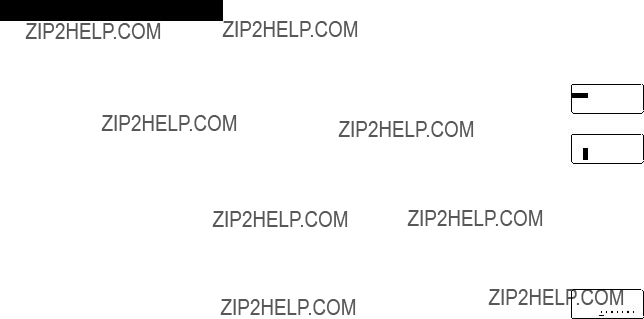
???At this point, the label printer returns to the text input screen.
To change the text effect for a range of text
1.After performing the two steps under ???To assign text ef- fects???, use u and ito highlight ???TEXT??? and then press
SET.
2.Move the cursor to the start character from which you want to change the text effect and then press SET to register your selection.
3.Move the cursor to the end character up to which you
want to change the text effect and then press SET to register your selection and change the text effect.
???At this point, the label printer returns to the text input screen.
Part 6 Character Sizes
Your label printer comes with two basic typefaces: standard and small. You can adjust the size of characters either by direct specifying for each character or specifying character size for entire lines of text using preset formats.
The operations in this part of the manual explain how to change character sizes using each of these techniques.
Direct Specification of Character Sizes
You can specify the size of characters using the numeric factors shown in the tables below. A character size change is indicated on the display by a character size indicator.
Standard Typeface
???The normal size for the standard typeface is 1 ??? 1 (24 ??? 24 dots; 3mm ??? 3mm).
???Character size can be changed by specifying a vertical factor (1, 2, 3, 4, 5) and a horizontal factor (1, 2, 3, 4, 5, 6, 7).
???The table below shows the character size indicator val- ues that appear for each character size.
??? Standard Typeface
Important! The vertical character sizes you can use are automatically limited by the width of the tape loaded in the label printer.
???The range (From - To settings) for a character size speci- fication cannot extend from one block to another.
Small Typeface
???The normal size for the small typeface is 1 ??? 1 (16 ??? 16 dots; 2mm ??? 2mm). 8 ??? 16 dots matrix is used to form
???Character size can be changed by specifying a vertical factor (1, 2, 3, 4) and a horizontal factor (1, 2, 3, 4, 5, 6, 7, 8).
???The table below shows the character size indicator val- ues that appear for each character size.
???The character size indicator 1 ??? 1 is shown on the display when the small typeface is being used.
??? Small Typeface
???The range (From - To settings) for a character size speci- fication cannot extend from one block to another.
Notes
???Proportional spacing cannot be used with the small typeface.
???Available font is only one.
???Style and text effect settings may not print correctly when used with the small typeface.
???Dingbats and user characters may not print correctly when used with small typeface.
To change character size using direct specification
1. While there is text on the display, press SIZE.
??? ??? ??? ??? ??? S I ZE ??? ??? ??? ??? ???
FORMAT
2. Use u and i to highlight ???SIZE??? and then press SET.
??? ??? ??? ??? ??? S I ZE ??? ??? ??? ??? ???
HE I GHT W I DTH
??? 4
3. Specify the character size you want.
???Use t and y to move the highlighting between the two dimensions.
???To change a dimension, press i to increase it or u to decrease it. Or you can input a value directly on the label printer???s keyboard.
???Remember that the dimensions you can specify depend on the width of the tape loaded in the label printer (see table, left).
4.After you finish setting the character size you want, press SET to register it.
12345

5.Move the cursor to the start character from which you want to change the character size and then press SET to register your selection.
??? ??? ??? ??? ??? S I ZE ??? ??? ??? ??? ???
TO ?
12 45
45
6. Move the cursor to the end character up to which you want to change the character size and then press SET to register your selection and change the character size.
???At this point, the label printer returns to the text input screen.
The following shows a character size mark.
Character size mark
Specifying Character Sizes for Lines of Text Using Preset Formats
With this method, you input the text you want and then use preset formats to specify the character size for each line of text. Note that character size marks do not appear inside of text when you specify character sizes using this method. In- stead, the character size display mark shows the size of the characters where the cursor is currently located.
About the format menu
The format that appears in the following procedure uses symbols to indicate character sizes in each line of text. The formats that appear depend on the width of the tape loaded in the label printer and the number of lines in the block of text where the cursor is located when you press the SIZE key. The following shows all of the formats available for each tape width and the number of lines of text.
???Note that with the preset formats, all character sizes have the same vertical and horizontal measurements.
24mm and 18mm tape, 1 line of text
24mm and 18mm tape, 2 lines of text
Important! You can use preset formats to specify charac- ter sizes for lines of text only when there is no character size specification already made inside of the text. If you press the SIZE key while the cursor is located inside of a block that already contains a character size indicator, the FOR- MAT item will be dimmed on the SIZE menu, which means it cannot be selected.
To specify character sizes for lines of text using preset formats
1.While the cursor is located inside of the block of text where you want to use the preset formats, press SIZE.
??? ??? ??? ??? ??? S I ZE ??? ??? ??? ??? ???
FORMAT
??? See page
2.Use u and i to highlight ???FORMAT??? and then press
SET.
??? ??? ??? ??? ??? S I ZE ??? ??? ??? ??? ???
??? FORMAT ???
???The FORMAT menu appears with all of the preset for- mats that are available in accordance with the number of text lines there are in the block where you located the cursor, and with the width of the tape loaded in the label printer.
3.Use u, i, t and y to move the highlighting to the format that you want to use and then press SET to select
it.
???At this point, the label printer returns to the text input screen.
To find out preset format character sizes
Use the t and y cursor keys to move the cursor around the display. The character size indicator shows the current size setting for the character where the cursor is located.
About Auto Sizing
If you do not specify a character size, the label printer auto- matically selects the optimum size in accordance with the width of the tape you are using. If you are using frames (page
The following are examples of how auto sizing works.
9mm
12mm
18mm
24mm
Important! Remember that changing the tape cartridge may make it impossible to print text if there are too many lines. Note the following relationships between tape width and the number of text lines.
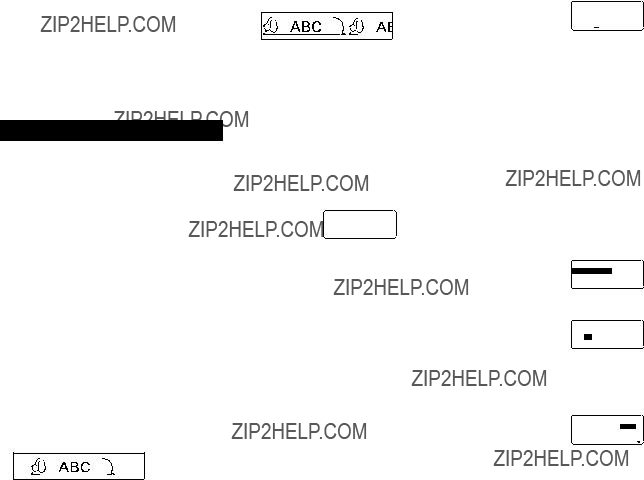
(See page
Part 7 FORM Menu Functions
This part of the manual describes how to use the FORM menu to layout your text exactly the way you want it on the label. With the FORM menu, you can control character pitch, text blocks, text alignment, and a wide range of other features.
Fundamentals of Label Layout
Before we actually begin our discussion about how to lay- out a tape, we should first define a few terms. Note the fol- lowing.
Blocks
A block is text that is enclosed between two block marks ( ). Note that the first (far left) block does not require a block mark at the beginning, and the last (far right) block does not require a block mark at the end. If there are no block marks, all of the text is treated as a single block. You can individually specify the length of each block, as well as the pitch and the number of lines of inside each block.
). Note that the first (far left) block does not require a block mark at the beginning, and the last (far right) block does not require a block mark at the end. If there are no block marks, all of the text is treated as a single block. You can individually specify the length of each block, as well as the pitch and the number of lines of inside each block.
Print Area
The print area is the actual area of a label that contains printed text. It starts with the left side of the first character printed, and ends with right side of the last character printed.
Side Spaces
The side spaces are blank areas that the Label Printer au- tomatically adds on either end of the print area. Note that side spaces are only added when you are using auto feed, and they are not added when using manual feed.
Auto Feed (with side spaces)
Manual Feed (no side spaces)
Label Length
The label length is the print area, plus the side spaces. Settings you make for side spaces, block spacing, and mir- ror printing affect the entire label length.
Using the Layout Display
You can check the layout of your label at any time using the layout display. The layout display shows all of the graphics and text elements that make up your label to give you a general idea of how the label is laid out.
To show the layout display
1. After laying out the label you plan to print, press
LAYOUT.
2. If the label layout is too big to fit on a single display, use t and y to scroll it.
??? Pressing t returns to the top of the layout.
3. Press ESC to quit the layout display.
???You can view the actual appearance of the label using the image display, which is described on page
Creating and Deleting Blocks
The following procedures describe how to create and de- lete blocks. Later you will learn how can change certain settings on a
To create a block
Example: To input the text ???ABC Computer Company??? and create two blocks: ???ABC??? and ???Computer Com- pany???.
1.Input the text.
2.Move the cursor to the space between ???ABC??? and ???Com- puter Company???.
3.Press BLOCK.
???If you wanted to break the text up into three blocks, you would input another block mark.
To delete a block mark
To delete a block mark, use the procedures for BS and DEL as described under ???Deleting Individual Characters??? (page
Block Operations
The procedures in this section can be used to control the following parameters for each block.
???Direction (vertical, horizontal)
???Alignment (left, center, right, uniform spacing)
???Justification (justify, ragged)
???Character pitch (none, narrow, medium, wide)
???Block length (auto, fixed)
Use the BLOCK FORM menu to perform block operations.
To display the BLOCK FORM menu
1. While there is text on the display, press FORM.
??? ??? ??? ??? ??? FORM ??? ??? ??? ??? ???
A L L FORM
2.Use u and i to move the highlighting to ???BLOCK FORM??? and then press SET.
??? ??? B LOCK FORM ??? ???
ONE B LOCK
A L L B LOCKS
3.Specify whether you want your specifications to apply to one block or all blocks and then press SET.
???If you specify one block, the specifications you make will be applied to the block where the cursor was located when you pressed FORM.
??? ??? B LOCK FORM ??? ???
D I RECT I ON
A L I GNL EF T
J UST I FY J UST I FY
???Use u and i to move the highlighting between menu items.
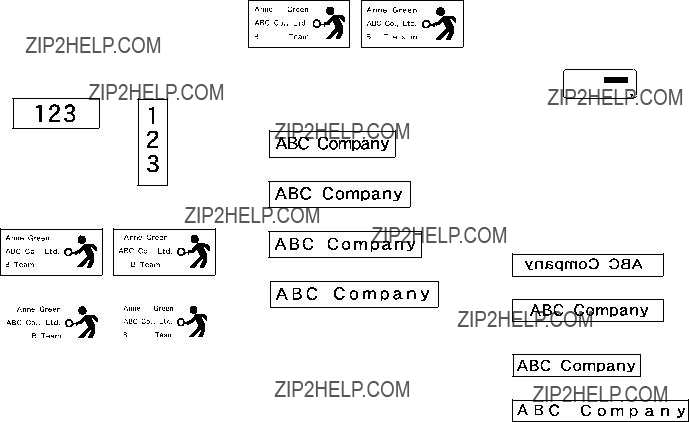
???The BLOCK FORM menu has two pages. Press SET while the first page is displayed to change to the second page. Pressing SET while the second page is displayed regis- ters any settings with the menu and returns to the text input screen.
???Use t and y to change between settings of the currently selected (highlighted) item.
???The following explanations describe each of the BLOCK FORM menu items in detail.
JUSTIFICATION
This item lets you specify justified (even) or ragged (un- even). The following shows some examples of how justifi- cation affects text.
???Justification is applied only when EQUAL is selected for
ALIGNMENT.
CHARACTER PITCH
This is the relative spacing between characters. You can specify character pitch as NONE, NARROW, MEDIUM or WIDE. The following shows examples of each character pitch setting.
NONE
NARROW
MEDIUM
WIDE
BLOCK LENGTH
Select ???FIX??? if you want so specify a fixed block length in the range of 0.0 cm to 99.9 cm. Specify ???AUTO??? for this option if you want the label printer to automatically adjust the length of the block.
All Text Operations
The procedures in this section control the following param- eters for all of the text on the display.
???Mirror printing (mirror, normal)
???Proportional character spacing (on, off)
???Smoothing (on, off)
???Block space (none, narrow, wide)
???Feed (long, short, manual)
???Tape length (auto, fixed)
???Block alignment (left, center, right, uniform spacing)
Use the BLOCK FORM menu to perform block operations.
To display the ALL FORM menu
1.While there is text on the display, press FORM.
2.Use u and i to move the highlighting to ???ALL FORM??? and then press SET.
??? ??? ??? ??? ??? A L L ??? ??? ??? ??? ??? ???
M I RROR
PROPORT I ONA L ON
SMOOTH I NG ON
???Use u and i to move the highlighting between menu items.
???The ALL FORM menu has three pages. Press SET while the first page is displayed to change to the second page. Press SET while the second page is displayed to change to the third page. Pressing SET while the third page is displayed registers any settings with the menu and re- turns to the text input screen.
???Use tand y to change between settings of the currently selected (highlighted) item.
???The following explanations describe each of the ALL FORM menu items in detail.
MIRROR/NORMAL
MIRROR
NORMAL
PROPORTIONAL
ON
OFF

SMOOTHING
ON
OFF
NARROW
FEED
You can also one of two different feed settings that provides either long or short side spaces (???Fundamentals of Label Layout??? page
LONG
This setting causes the tape to feed 16mm at the be- ginning and end of each printing.
SHORT
This setting causes the tape to feed 3mm at the begin- ning and end of each printing.
MANUAL
This setting provides side spaces of only 1mm of the printed text. If you perform two consecutive print op- erations (without manually feeding between prints), the last character of the first print operation is followed by the first character of the second print operation, with no space provided between them. It is a good way to save tape when you print a series of tapes.
Important! After you finish printing when using manual feed, be sure to always press FUNC and then FEED to feed the tape before cutting it. If you don???t you will cut off part of the printed text.
TAPE LENGTH
Select ???FIX??? if you want so specify a fixed tape length in the range of 0.0 cm to 99.9 cm. Specify ???AUTO??? for this option if you want the label printer to automatically adjust the length of the tape.
BLOCK ALIGN
LEFT
RIGHT
CENTER
EQUAL
Part 8 Printing
This part of the manual includes all the information you need to print tapes.
Note The following information covers basic printing pro- cedures only. Other printing related information can be found in the sections of this manual describing presets (page
Printing Precautions
???Never turn power off while printing is being performed.
???Make sure that the tape outlet is not blocked before you start printing.
???Never operate the tape cutter while printer is being per- formed (indicated by the message ???NOW PRINTING??? on the display).
???During printing at very high density, printing of very long text, or repeat printing of the same text a number of times, the label printer may stop printing for about five seconds. This is not a malfunction, and normal printing should resume shortly.
Printing a Tape
Printing a tape is as easy as pressing the PRINT key.
To print a tape
1.Press the PRINT key to print a tape of the text you have input and laid out.
???To stop a print operation that is in progress, press ESC.
???You can add extra margin to the beginning of the tape by pressing FUNC and then FEED before starting the print operation.
2.After the print operation is complete, press the tape cut- ter lever to cut the tape.
???Make sure you press the tape cutter lever as far as it will go, but do not apply excessive force.
3. Use scissors to trim the tape to the size you want, if nec- essary.
???After you print a tape, you can peel off its paper backing and stick the tape onto the object you want. Note that the tape will not stick on coarse, wet, oily, or soiled surfaces. Also, you should not try to use the tape where it is ex- posed to direct sunlight or rain. Do not stick the tape onto human skin.
???An easy way to remove the backing from a tape and ex- pose the adhesive surface is to bend the tape near one of its ends. This should cause the tape and its backing to separate, allowing you to pull them apart.
To adjust the print density
1.Turn power on.
2.Press FUNC and then FORM (SET UP) to display the SET UP menu.
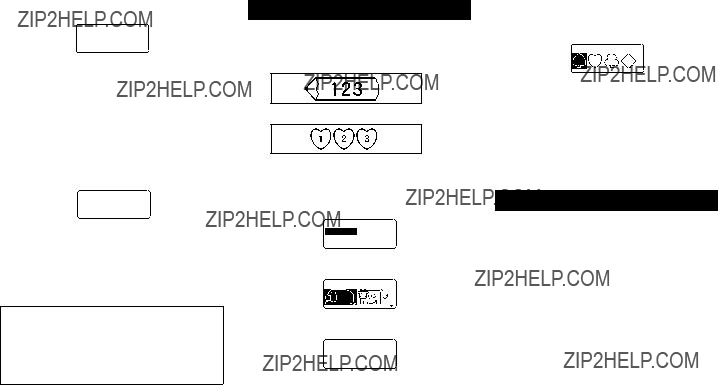
3.Use u and i to highlight ???DENSITY???, and then press
SET.
??? ??? ??? DENS I TY ??? ??? ??? ???
4.Use t and y to highlight the density you want to use and then press SET to apply the setting and return to the
text input screen.
???The higher the number you select, the darker the charac- ters that are printed.
Using the Image Display
The image display lets you view a realistic image of exactly what your tape will look like before you print it.
To show the image display
1. After laying out the label you plan to print, press IMAGE.
 ABC
ABC
??? The image on the display scrolls from right to left.
2.To stop the image from scrolling and freeze the current contents on the display, press SET.
3.Press SET again to resume scrolling.
4.Press ESC to quit the image display.
???Labels that contain very thin lines or a large number of characters may not appear normally on the image display.
The appearance of the message ???REPLACE BATTER- IES!??? or ???LOW BATTERY!??? indicates that battery power is low. Whenever either of these messages appears, replace all the batteries with a full set of new ones as soon as possible. Continued use of the label printer while battery power is low can result in sudden power failure during operation or printing.
Part 9 Frames
The frame feature makes it easy to add attractive ornamen- tal frames to your text. You get a choice of two types of frames.
Frame around the printing area
Frames around each character
To specify a frame around the printing area
1.Input the text you want to frame.
2.Press FRAME.
??? ??? ??? ??? FRAME ??? ??? ??? ??? ???
EACH CHARACTER
3.Use u and i to move the highlighting to ???ALL TEXT??? and press SET.
4.Use u, i, t and y to move the highlighting to the frame you want to use and press SET.
??? ??? ??? ??? FRAME ??? ??? ??? ??? ???
???See page
5.Press SET to print your text with the selected frame or ESC to abort the print operation without printing anything.
To specify frames around each character
Note
Five kinds of flames are available when 6mm tape is loaded in the label printer.
1.Input the text you want to frame.
2.Press FRAME.
3.Use uand ito move the highlighting to ???EACH CHAR- ACTER??? and press SET.
???EACH CHARACTE 1
4.Use u, i, t and y to move the highlighting to the frame you want to use and press SET.
???See page
5.Press SET to print your text with the selected frame or ESC to abort the print operation without printing anything.
Important! Printing cannot be performed on 6mm tape while EACH CHARACTER frames are being used.
Part 10 PRESETS Menu Functions
This part of the manual describes how to use the PRESETS menu to access a variety of different
To display the PRESETS menu
1. Press PRESETS.
???Note that PRESETS menu functions are normally used when there is no text on the input screen. If there is text on the screen when you press PRESETS, the message ???CLEARS INPUT TEXT!??? appears on the screen. You can proceed with the operation (and clear the text) by press- ing SET, or press ESC to abort without clearing anything.
2.Use uand ito move the highlighting to the preset you want to select and then press SET.
LAYOUT
The preset layouts provide a total of 74 label templates that you can use to create attractive labels quickly and easily. Each template is made up of ???elements??? whose contents you can use as they are or change to something else. You can even store completed labels in memory for instant re- call when you need them.
???Note that 6mm wide tape cannot be used for printing a preset layout.
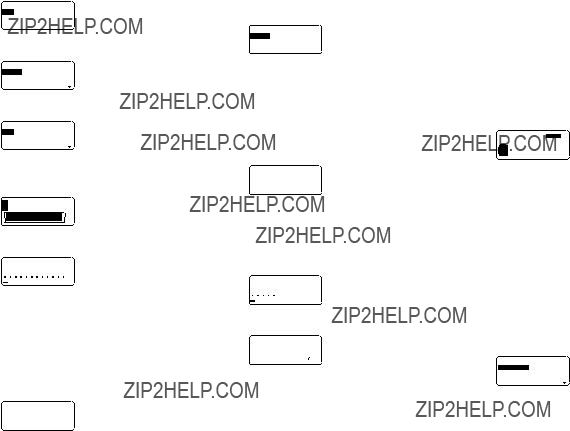
To use a preset layout to create a label and print it
1.While the PRESETS menu is on the display, use u and ito move the highlighting to ???LAYOUT??? and then press
SET.
??? ??? ??? ??? L AYOUT ??? ??? ??? ???
RECA L L
DE L ETE
2.Use u and i to move the highlighting to ???NEW??? and then press SET.
??? ??? ??? ??? L AYOUT ??? ??? ??? ???
AUD I O
FI L E
3.Use u and i to move the highlighting to ???VIDEO??? and then press SET.
??? ??? ??? ??? V I DEO ??? ??? ??? ??? ???
VHS
8mm
???Note that you can also recall an existing label.
4.Use u and i to move the highlighting to ???VHS??? and then press SET.
2 3 4
5.Use t and y to move the highlighting to the number of the layout you want to use (1, 2, 3, 4) and then press SET.
TI T L E
???Note that some blocks already contain characters. You can use the characters as they are or replace them with new ones.
6. Input the text you want to include in each element, and then press SET to advance to the next element.
???To use a character already in an element without chang- ing it, press SET to advance to the next element. To leave an element blank, press SET without inputting anything.
???When you press SET after inputting text for the last ele- ment, the menu shown here appears.
??? ??? ??? ??? L AYOUT ??? ??? ??? ???
7.Specify box on/off, the print direction (page
???Use u and i to move the highlighting between items, and t and y to change each setting.
???Turning on ???BOX??? causes the layout to be enclosed in a box when it is printed.
8. After making the settings you want, press SET.
??? ??? ??? ??? L AYOUT ??? ??? ??? ???
S TORE
EX I T
9. Use u and i to move the highlighting to ???PRINT??? and then press SET to execute it.
???The message ???CUT THEN [SET]!??? appears on the screen. Operate the tape cut lever to cut off any excess tape.
10. Press SET.
???After printing is complete, operate the tape cut lever to cut the tape.
11.Use u and i to move the highlighting to ???EXIT??? and then press SET.
??? ??? ??? ??? L AYOUT ??? ??? ??? ???
EX I T ? SET / ESC
12. Press SET to end the operation.
To store a label created using a preset layout
1.Perform steps 1 through 8 under ???To use a preset layout to create a label and print it??? to create the label.
2.Use u and ito move the highlighting to ???STORE??? and then press SET.
a NAME ?
3.Input up to five characters for the name of the label, and then press SET.
??? ??? ??? ??? L AYOUT ??? ??? ??? ???
STORE ? SET / ESC
USED MEMORY 0%
4.Press SET to store the label or ESC to abort the opera- tion without storing anything.
5.Use u and i to move the highlighting to ???EXIT??? and then press SET.
6.Press SET to end the operation.
To recall a preset layout label from memory
1.While the LAYOUT menu is on the display, use uand i to move the highlighting to ???RECALL??? and then press SET.
2.Use uand ito display the name of the label you want, and then press SET to recall it.
3.Now you can make any changes in the label contents
and then print it, or simply print the label without making any changes.
???To make changes in the label contents, use the proce- dures starting from step 8 under ???To use a preset layout to create a label and print it???.
???To print the label without making any changes, perform the procedure starting from step 6 under ???To use a preset layout to create a label and print it???.
To delete a preset layout label from memory
1.While the LAYOUT menu is on the display, use uand i to move the highlighting to ???DELETE??? and then press SET.
DEL
1 VHS 1
L P a r t y
2.Use uand ito display the name of the label you want, and then press SET to delete it.
3.Press SET to delete the label.
ENLARGE
This item lets you print up to 16 characters on multiple tapes. You can then assemble the tapes into an enlarged label. Note that this item is available only when 12, 18, or 24mm tape is loaded in the label printer. See page
???12mm tape cannot be used for printing a tape enlarged using the ???4 PIECES LARGE??? setting.
To print a
1.While the PRESETS menu is on the display, use u and i to move the highlighting to ???ENLARGED??? and then press SET.
??? ??? ??? EN L ARGED ??? ??? ???
3P I ECES
4P I ECES

2.Use u and i to move the highlighting to the enlarge- ment size you want to use and then press SET.
3.Input up to 16 characters of text, and then press SET.
4.Specify the print direction (page
or normal printing (page
???Use u and i to move the highlighting between items, and t and y to change each setting.
5. After making the settings you want, press SET.
??? ??? ??? EN L ARGED ??? ??? ???
6.Use u and i to move the highlighting to ???PRINT??? and then press SET to execute it.
7.Use u and i to move the highlighting to ???EXIT??? and then press SET.
8.Press SET to end the operation.
BAR CODE
With this item, you can print any one of seven different types of bar codes:
Important! The procedure you use to print a bar code de- pends on the type of bar code you select.
Bar Code Tape
Only the following types of tape should be used for printing bar codes.
???Black on white tape (WE)
???Blue on white tape (WEB)
???Black on yellow tape (YW)
Important!
???You cannot use 6mm tape to print bar codes.
???You can input up to 60 characters as comment text when using 18mm/24mm tape. You cannot input comment text with 9mm and 12mm tape (the comment input screen will not appear). If you do not want to input comment text, press SET without inputting anything.
???Always test bar codes produced using this label printer before actually using them. If bar codes cannot be read properly, try adjusting the print density (page
The following applies to
To print a bar code
1.While the PRESETS menu is on the display, use u and i to move the highlighting to ???BAR CODE??? and then press SET.
2.Use u and i to move the highlighting to ???NEW??? and then press SET.
??? ??? ??? BAR CODE ??? ??? ???
EAN ??? 8
UPC
3.Use uand ito move the highlighting to the type of bar code you want to print and then press SET.
???This display appears only if you are using 18mm/24mm tape. If you are using different tape, skip to step 5.
4.Input up to 60 characters of comment text if you want, and then press SET.
5.Input the bar code???s data and then press SET.
6.Use u and i to move the highlighting to the size you want to use and then press SET.
??? ??? ??? BAR CODE ??? ??? ???
STORE
EX I T
7.Use u and i to move the highlighting to ???PRINT??? and then press SET to execute it.
8.Use u and i to move the highlighting to ???EXIT??? and then press SET.
9.Press SET to end the operation.
ITF, CODE39, CODABAR
The following applies to ITF, CODE39 and CODABAR bar codes.
To print a bar code
1.While the PRESETS menu is on the display, use u and i to move the highlighting to ???BAR CODE??? and then press SET.
2.Use u and i to move the highlighting to ???NEW??? and then press SET.
3.Use uand ito move the highlighting to the type of bar code you want to print and then press SET.
??? ??? ??? BAR CODE ??? ??? ???
YES
4.Use u and i to select ???YES??? (use check digit) or ???NO??? (do not use check digit) and then press SET.
???This display appears only if you are using 18mm/24mm tape. If you are using different tape, skip to step 6.
5.Input up to 60 characters of comment text if you want, and then press SET.
6.Input the bar code???s data and then press SET.
7.Perform steps 6 through 9 under ???To print a bar code??? of
General Bar code Operations
The following procedures apply to all bar code types.
To store a bar code
1.Perform the required steps to create the bar code so the following is on the screen.
2.Use u and i to move the highlighting to ???STORE??? and then press SET.
3.Input up to five characters for the name of the bar code, and then press SET.
4.Press SET to store the bar code or ESC to abort the operation without storing anything.
5.Use u and i to move the highlighting to ???EXIT??? and then press SET.
6.Press SET to end the operation.
To recall a bar code from memory
1.While the BAR CODE menu is on the display, use u and i to move the highlighting to ???RECALL??? and then press SET.
2.Use u and i to display the name of the bar code you want, and then press SET to recall it.
3.Now you can make changes in the bar code and print it or store it as a new bar code.
To delete a bar code from memory
1.While the BAR CODE menu is on the display, use u and i to move the highlighting to ???DELETE??? and then press SET.
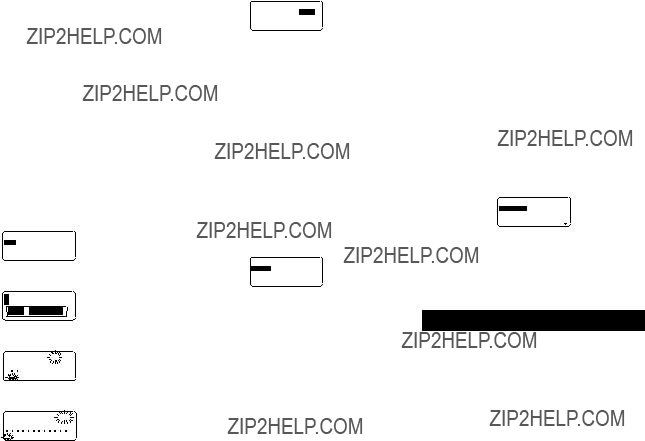
2.Use u and i to display the name of the bar code you want, and then press SET to delete it.
3.Press SET to delete the bar code.
NUMBERING
This label printer gives you a choice of four different number- ing formats that you can use to print sequentially numbered labels from 0 to 999.
To print sequentially numbered labels
1.While the PRESETS menu is on the display, use u and i to move the highlighting to ???NUMBERING??? and then press SET.
??? ??? NUMBER I NG ??? ??? ???
RECA L L
DE L ETE
2.Use u and i to move the highlighting to ???NEW??? and press SET.
2 3 4
3.Use t and y to move the highlighting to the number of the format you want and then press SET.
1
4.Input the starting number of the numbering sequence and then press SET.
5. Input any comment text you want and then press SET.
??? ??? NUMBER I NG ??? ??? ???
???You can also specify the font, character style, and text effects if you want.
6. Specify the print direction (page
???Use u and i to move the highlighting between items, and t and y to change each setting.
7.After making the settings you want, press SET.
8.Use u and i to move the highlighting to ???PRINT??? and
then press SET to execute it.
???The label printer prints a tape with the number and com- ment text, and then displays the screen shown in step 3, with the number incremented by one.
9.Repeat steps 4 through 7 to print as many sequentially numbered labels as you want.
10.To quit the numbered label operation, press ESC and then SET.
To store a numbering format
1.Perform steps 1 to 7 to create the numbering format so the following is on the screen.
??? ??? NUMBER I NG ??? ??? ???
STORE
EX I T
2.Use u and ito move the highlighting to ???STORE??? and then press SET.
3.Input up to five characters for the name of the number- ing format, and then press SET.
4.Press SET to store the numbering format or ESC to abort the operation without storing anything.
5.Use u and i to move the highlighting to ???EXIT??? and then press SET.
6.Press SET to end the operation.
To recall a numbering format from memory
1.While the NUMBERING menu is on the display, use u and i to move the highlighting to ???RECALL??? and then press SET.
2.Use u and i to display the name of the numbering format you want, and then press SET to recall it.
3.Now you can make changes in the numbering format and print it or store it as a new format.
To delete a numbering format from memory
1.While the NUMBERING menu is on the display, use u and i to move the highlighting to ???DELETE??? and then press SET.
2.Use u and i to display the name of the numbering format you want, and then press SET to delete it.
3.Press SET to delete the numbering format.
PHRASES
A collection of preset English phrases can be recalled quickly and easily when you need them. See page
To print a preset phrase
1.While the PRESETS menu is on the display, use u and ito move the highlighting to ???PHRASES??? and then press
SET.
??? ??? ??? PHRASES ??? ??? ??? ???
DO NOT BEND
DUP L I CATE
2.Use u and i to scroll through the preset phrases until the one you want is highlighted and then press SET.
3.Use u and i to highlight ???PRINT???, then press SET to print the phrase.
4.Use u and i to move the highlighting to ???EXIT??? and then press SET to end the operation.
Part 11 Stamp Printing
The stamp printing feature lets you create your own stamps using a selection of various formats. Then you can print on special stamp tape and attach the finished tape to an op- tionally available stamp holder.
When using the
Important! Note that an optional special stamp tape car- tridge and stamp tape holder is required in order to create a
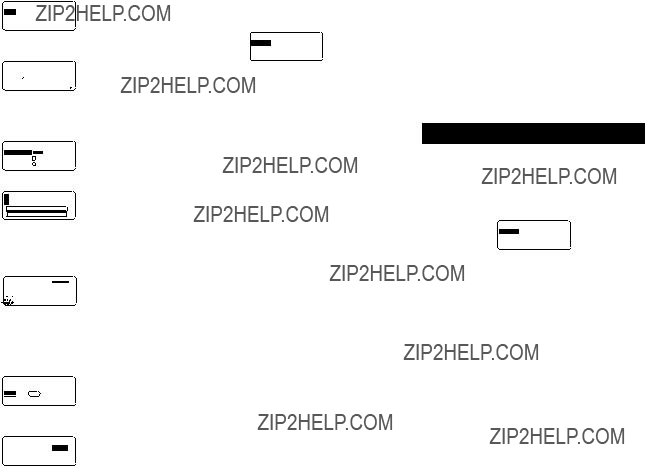
To create a new stamp label
1. Press STAMP.
??? ??? ??? ??? STAMP ??? ??? ??? ??? ???
RECA L L
DE L ETE
2.Use u and i to move the highlighting to ???NEW??? and then press SET.
3.Use u and i to move the highlighting to the stamp holder model that you will be using with your stamp tape and then press SET.
??? NS ( 1 0 ??? 2 0mm ) ??? ???
SQUARE
ROUND
4. Select the type of frame you want to use and press SET.
2
???The number of layouts that appear on the right display depends on the type of stamp holder you are using.
5.Use t and y to select the layout that you want to use and then press SET.
ITEM
6.Input the text you want to include in each block, and then press SET to advance to the next block.
???To leave a block blank, press SET without inputting any- thing.
???When you press SET after inputting the text for the last block, the following menu appears.
??? ??? ??? ??? STAMP ??? ??? ??? ??? ???
??? BOX ???
OF F
7.Use u, i, t and yto select a box type and then press
SET.
??? ??? ??? ??? STAMP ??? ??? ??? ??? ???
D I RECT I ON
USESTAMP
???If you select ???ROUND???, proceed immediately to step 8.
???If you select ???LONG FRAME???, you will then have to select a specific frame type before to proceed to step 8.
8.Use u and i to move the highlighting and use t and y to specify the setting and then press SET.
??? ??? ??? ??? STAMP ??? ??? ??? ??? ???
STORE
EX I T
9. Use u and i to move the highlighting to ???PRINT??? and then press SET to execute it.
???After printing is complete, operate the tape cut lever to cut the tape.
10.Use u and i to move the highlighting to ???EXIT??? and then press SET.
11.Press SET to end the operation.
To store a stamp label
1.Perform steps 1 through 9 under ???To create a new stamp label??? to create the label.
2.Use u and ito move the highlighting to ???STORE??? and then press SET.
3.Input up to five characters for the name of the label, and then press SET.
4.Press SET to store the label or ESC to abort the opera- tion without storing anything.
5.Use u and i to move the highlighting to ???EXIT??? and then press SET.
6.Press SET to end the operation.
To recall a stamp label from memory
1.While the STAMP menu is on the display, use u and i to move the highlighting to ???RECALL??? and then press
SET.
2.Use uand ito display the name of the label you want, and then press SET to recall it.
3.Press SET. Now you can make any changes in the label contents and then print it, or simply print the label with-
out making any changes.
???To make changes in the label contents, use the proce- dures starting from step 6 under ???To create a new stamp label???.
???To print the label without making any changes, perform the procedures starting from step 6 without in putting any characters.
To delete a stamp label from memory
1.While the STAMP menu is on the display, use u and i to move the highlighting to ???DELETE??? and then press
SET.
2.Use uand ito display the name of the label you want, and then press SET to delete it.
3.Press SET to delete the label.
???There are two stamp tape sizes: 18mm and 24mm. There
are also four types of stamp holders: large and small for 24mm tape, and large and small for 18mm tape. Note that certain stamp tape and stamp holders may not be available in some areas.
Part 12 Memory
This part of the manual tells you how to store text data in memory for instant recall when you need it. You can store up to 2,500 characters in memory.
To store data
1. Input the text you want to store, and then press MEMORY.
??? ??? ??? ??? MEMORY ??? ??? ??? ???
RECA L L
DE L ETE
2.Use u and i to move the highlighting to ???STORE??? and then press SET.
3.Press SET to store the text in memory or ESC to abort the store procedure without storing anything.
Recalling Text From Memory
There are two methods you can use to recall text: sequen- tial search and character search. With sequential search, you scroll through memory contents until you find what you want. With character search, you input up to eight charac- ters and the label printer searches through its memory to find them for you.
To recall memory text using sequential search
1. Press MEMORY.
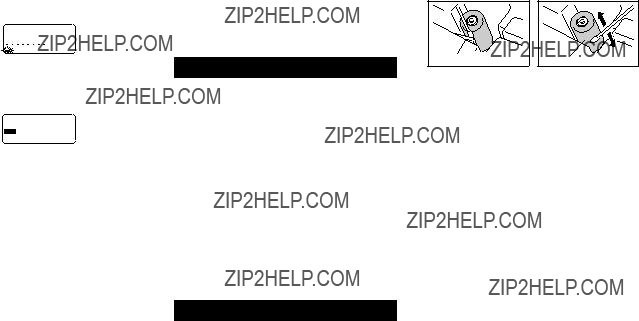
2.Use u and i to move the highlighting to ???RECALL??? and then press SET.
a
SEARCH ?
3.Use either sequential search or character search to dis- play the memory text you want to delete and then press
SET.
4.Press SET to delete the data.
Part 13 Data Communication
??? ??? ??? ??? MEMORY ??? ??? ??? ???
COMB I NE
???What you do next depends on whether or not you want to delete existing text on the display or combine the recalled text with existing text.
NEW
1.Use u and i to move the highlighting to ???NEW???.
2.Press SET to delete any text that was previously on the input screen and replace it with the recalled text.
COMBINE
1.Use u and i to move the highlighting to ???COMBINE??? and then press SET.
2.Use t and y to move the cursor to the location where you want the recalled text inserted and then press SET.
To recall memory text using character search
1.Press MEMORY.
2.Use u and i to move the highlighting to ???RECALL??? and then press SET.
3.Input the characters you want and then press SET to
start the search operation.
???The first item that starts with the characters you input ap- pears on the screen.
???The characters must come at the very beginning of the item. The label printer does not find the characters if they come at the beginning of a block or line inside the item.
4.Continue from step 4 under ???To recall memory text using sequential search.???
To delete memory text
1.Press MEMORY.
2.Use u and i to move the highlighting to ???DELETE??? and then press SET.
???The
Important!
???Data communication with a personal computer requires Computer Link software and a data communication ca- ble.
???See the documentation that comes with the Computer Link software for details on how to operate it.
???Data communication with your label printer requires a specific computer system configuration as described in the documentation that comes with the Computer Link software. You may not be able to exchange data with a personal computer that does not conform with the required system configuration.
???After finishing with a data communication operation (in- cluding printing), press ESC to exit the Data Communica- tion Mode. All other functions are disabled while data com- munication is being performed.
Part 14 Reference
This section contains information about the label printer that you can use as reference when you need it.
Cleaning the Printer Head and Roller
A dirty printer head and roller can result in poor printing quality. If you have problems with print quality, use the fol- lowing procedure to clean the printer head and roller.
To clean the printer head and roller
1.Make sure the label printer is turned off.
2.Press the tape cartridge compartment cover release and open the compartment cover.
3.Remove the tape cartridge.
4.Use a cotton swab dipped in alcohol to clean the printer head and roller as shown in the illustration.
5.Replace the tape cartridge and close the compartment cover.
Initial Settings
The following are the initial settings of the label printer when- ever you turn it power on or reset the unit.
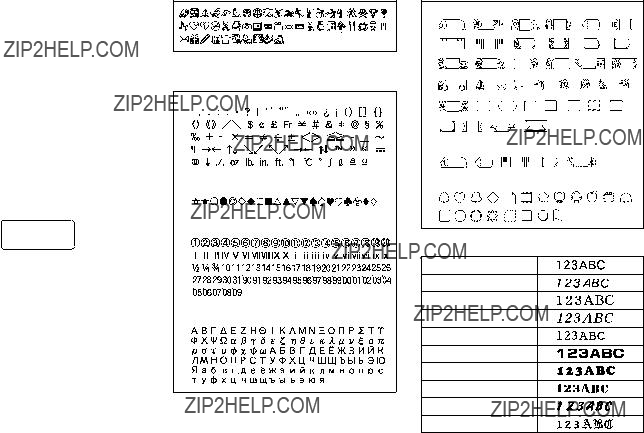
Initializing the Label Printer
If you experience serious malfunction of the label printer or if operation fails completely, try performing the following operation to initialize the printer.
Important! Initializing the label printer deletes all memory contents. Make sure you have a
To initialize the label printer
1.Turn power off.
2.Holding down the PRINT, ESC, and ON keys, turn power back on.
I N I T I A L ?
SET / ESC
???This prompt confirms whether or not you want to initialize the label printer.
3.Press SET to initialize the label printer or ESC to abort the reset operation.
Format Indicator
The following shows how the brackets on either side of the format indicator change to indicate various conditions.
[???]: Fixed block length (specified by user)
(???]: Block text too long for fixed block length, but printing will be performed by compressing text.
???]: Printed tape length will be longer than specified fixed length because text will not fit within fixed tape length even if its size is reduced 50%.
Tape Length Indicator
The following shows how the brackets on either side of the tape length indicator change to indicate various conditions.
[5.1cm]: Fixed tape length specified by user. 5.1cm]: Printing operation cannot be performed.
Illustrations
Symbols, Dingbats, and Special Charac- ters
??? SYMBOL
???DINGBAT
???NUMBER
??? GREEK, RUSSIAN
Frames
??? ALL TEXT
*When 6mm tape is loaded
??? EACH CHARACTER
Fonts
New
New
New Roman
New Roman Italic
Courier
Logo Style
Rich Stroke
Stencil
Bold Script
Black Letter
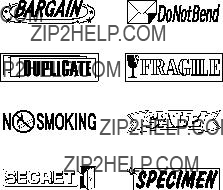
ENLARGED Label Measurements
Phrases
Bar Code Specifications
*1 The check digit is automatically calculated in accordance with input data. For
*2
*3 The number of digits printed below a bar code equals the input characters plus automatically appended char- acters.
*4 An error message is displayed whenever there are in- sufficient digits. The unit will not allow input of too many digits.
*5 An error message appears and printing is impossible if an odd number of digits are input when an ITF check digit is not being used. Append a zero to the beginning of the digits and
*6 An error message appears and printing is impossible if an even number of digits are input when an ITF check digit is being used. Append a zero to the beginning of the digits and
*7 Both the start code and end stop code of CODE39 must be asterisks.
*8 An error message appears and printing is impossible if any characters other than those specified here are used.
*9 With CODABAR, A, B, C, or D can be used as the start code and stop code. An error message appears and print- ing is impossible if any other character is used.
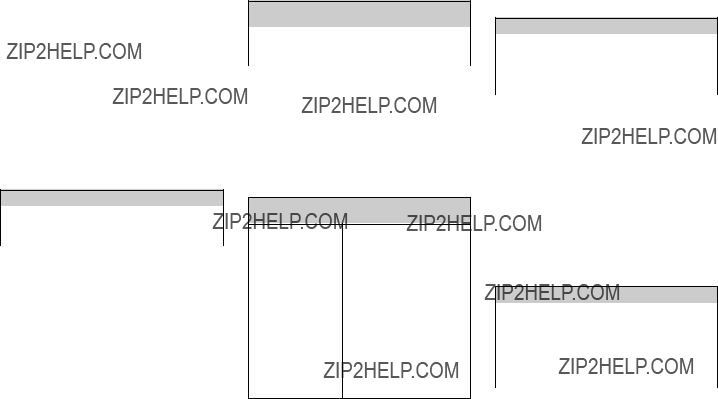
Troubleshooting
??? Power Supply
??? Text Input
Cannot input text.
Tape comes out when PRINT is pressed, but nothing is printed on it.
Ink ribbon is being fed from the tape outlet along with the tape.
Important!
???Before loading an ink ribbon cassette into the label printer, always make sure you take up any slack in the ink ribbon first.
???If the ink ribbon is broken, you must change to another ink ribbon cassette.
??? Tape Cutting
Cannot cut tape.
??? Using Labels
Label will not adhere to a surface.
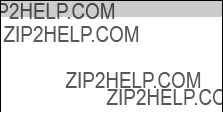
??? Data Communication
Cannot transfer data.
Error Messages
Specifications
Model:
Input
Keyboard Layout: Typewriter (QWERTY)
Character Types
Alpha (English and other languages): 52 (A~Z, a~z), 99 (??, ??, ??, W etc.)
Numbers: 10
Symbols/Greek and Russian Characters: 306
Illustrations: 50
Display
Type: Liquid crystal display
Columns: 12
Lines: 2
Printing
Type: Thermal transfer
Speed: Approximately 12mm/second
Width: 4mm (6mm tape); 8mm (9mm tape); 10mm (12mm tape); 16mm (18/24mm tape)
Character Matrix: 48 ??? 48 dots
Character fonts: New
Character spacing: NONE, NARROW, MEDIUM, WIDE
Tape Length: 0.0cm to 99.9cm (FIX); longer lengths pos- sible with AUTO
Block Length: 0.0cm to 99.9cm (FIX); longer lengths pos- sible with AUTO
Character Effects: Shading, underline, box
Character Styles: Normal, bold, outline, shadow, raised
Character Sizes: 72 from 1 ??? 1 to 5 ??? 8 and 1 ??? 1S to 4 ??? 8S
Number of Lines:
6mm tape: 2 lines
9mm tape: 4 lines
12mm tape: 5 lines
18mm or 24mm tape: 8 lines
Frames: 55 types
Preset Formats: 74 types
Preset Phrases: 8 types
Memory
Text: up to 2,500 characters
General
Main power supply: Specified for the
Battery life: Approximately 3 tape cartridge (continuous printing)
Memory
Battery life: Marked on the sticker on the back of the label printer.
Be sure to have the battery replaced by the date noted on the sticker on the back of the label printer. Have the battery replaced by the retailer where you purchased the label printer or by an authorized CASIO service provider. Note that you will be charged for battery replacement.
Power consumption: 12 W
Auto Power Off: Approximately six minutes after last key operation
Ambient Temperature: 10?? to 35??C (50?? to 95??F)
Dimensions: 63.5 (H) ??? 196 (W) ??? 195 (D) mm (21/2" (H) ??? 711/16" (W) ??? 711/16" (D))
Weight: 580g (20.5oz) (except main batteries)

CASIO COMPUTER CO., LTD.